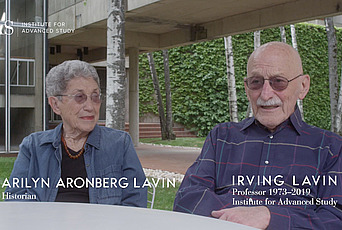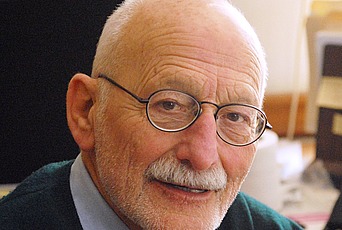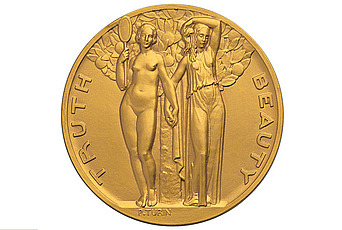A Tale of Three Busts
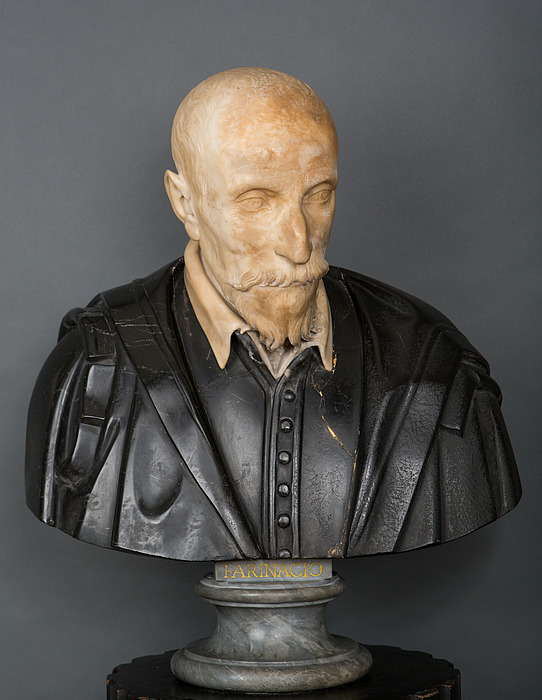
The Beginning: A Discovery of Busts
Our story begins in Rome on a Saturday in September of 1966. Art historian Irving Lavin returned home to the apartment he shared with wife Marilyn Aronberg Lavin after a day’s research at the San Giovanni dei Fiorentini, a sixteenth-century church located at the north end of the city’s Via Giulia.
In a state of excitement, Irving asked Marilyn: “How would you like a date two Saturdays from now to discover some Berninis?” A distinguished art historian in her own right, Marilyn accepted his offer with enthusiasm.
That day, Irving had been working in the archive of the San Giovanni dei Fiorentini, adjacent to the sacristy. He was consulting a nineteenth- century card catalog of the archive as part of his investigations into Italian architect Francesco Borromini, who designed the apse of the church and is also buried there.
When thumbing through the catalog cards under the letter ‘B’, Irving unexpectedly came across two cards with a familiar title name: that of Gianlorenzo Bernini (1598–1680). The famous sculptor and architect had changed the face of Rome, but had no known connection with this particular church. Irving had been researching Bernini since his days as a graduate student, writing his doctoral thesis on the Baroque artist while at Harvard.
Each card named a marble bust by Bernini and identified the sitter. Upon further inspection of the archive, Irving found that the two busts had been housed not in the church of San Giovanni dei Fiorentini but within the now-destroyed Confraternità della Pietá Hospital across the street. Thanks to his unrivalled familiarity with Bernini’s output, Irving realized that the names of the men represented in these busts had never been mentioned in published inventories of any sort.
Two weeks later, Irving and Marilyn, armed with a Brownie camera and a flashlight, returned to the church to learn more from its archivist. He was unable to provide any more information on the busts, but the sacristan recommended that they check the basement.
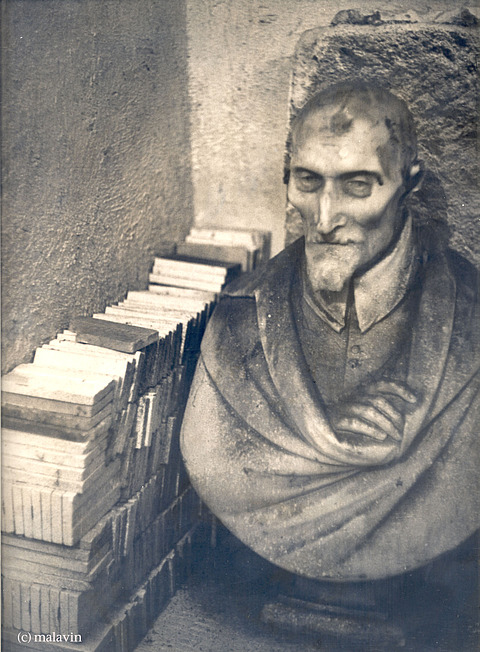
The pair descended into a dingy corridor where they came across the first bust. It was dusty, dirty, and carelessly situated alongside a pile of bricks and old candle wax. On the bust, a pencil inscription revealed the name of the person represented: Antonio Coppola, a doctor and benefactor of the Confraternità della Pietá. Around the corner, the other bust referenced in the card catalog, that of Florentine nobleman Antonio Cepparelli, was also discovered.
How had these works of art come to be in the church basement? In 1937, Mussolini had torn down the hospital as part of his construction of a new bridge from the Vatican to Rome. Everything of value in the Confraternità della Pietá, including the busts, was taken across the road and stored in the bowels of the church.
The discovery of two new works by Bernini garnered mass media attention. The New York Times covered the story, and Marilyn’s Brownie camera snapshot of the bust of Coppola was reproduced in Life magazine. The discovery of the busts of Coppola and Cepparelli in Rome was a watershed moment, securing Irving’s promotion from Associate Professor to full Professor at New York University. And, alongside his notable win of no less than three Arthur Kingsley Porter Prizes for outstanding scholarship published in The Art Bulletin in the 1960s and 1970s, Marilyn views the first Bernini discovery as a key factor in securing Irving’s appointment to the IAS Faculty in 1973.
A Mysterious Bernini
But this was not Irving’s only discovery of a Bernini. In 1967, an unexpected glimpse began an Odyssean journey to trace another bust, culminating in Irving making a new attribution to Bernini.
As a newly appointed Professor at the Institute of Fine Arts in New York, Irving had delivered a public lecture. Afterwards, he again returned home to Marilyn in a state of agitation, recounting how an audience member had approached him at the end of the talk and thrust a photograph of a bust under his nose. Irving had taken a brief look at it and pronounced it to be of little significance, a “mere copy.” However, upon reflection he was regretful that he had not paid closer attention, realizing that even copies could possess value. He tried to find the man who had approached him but never succeeded in doing so.
Fifteen years later, after Irving had been appointed as Faculty in the Institute’s School of Historical Studies, he received a call from the Sotheby’s New York auction house; they were asking for his opinion on a bust that was going up for sale. When looking at the associated catalog, Irving immediately recognized the bust as the one he had been shown at the lecture years before!
The piece is certainly striking. With its head of white Carrara marble, bust of black Belgian marble, and pedestal of grey marble, it was out of the ordinary. The sitter, an elderly man with a long moustache and beard, wears a shirt with a buttoned jerkin, and a cape over the shoulder.
Irving decided not to offer his scholarly opinion on the bust but to instead make an offer at the auction. Three weeks after the gavel fell, it was delivered to his and Marilyn’s home on the Institute campus. It stood on a column in the corner of their living room for 40 years, from 1982 to 2022. Its arrival saw the beginning of a decades-long investigation, conducted jointly by Irving and Marilyn, to find documentation for the bust and discern its maker. When recounting this process, Marilyn laughingly refers to Irving as “a terrier—he knows how to do a search!”
The couple’s dogged work ultimately bore fruit. In 2018, they jointly published an article in art historical journal Artibus et Historiae, in which they made their case for identifying the black-and-white bust as having been made by the young Bernini. Yet the only documentation that they could find for a long time was that inscribed into the bust itself: the word “Farinacio,” which named the man represented as Prospero Farinacci (1544–1618).
Farinacci was a prominent lawyer in sixteenth-century Rome. Marilyn describes him as “a man of many colors.” In his youth, he was involved in a knife fight which resulted in the loss of one eye. Later, he worked as a lawyer to the Vatican, taking care of everything from bookkeeping to accusations of heresy for two Popes. He also garnered a reputation for his defense of a young noblewoman, Beatrice Cenci. Beatrice had committed patricide after being subjected to years of abuse and sexual assault at her father’s hand. Farinacci defended her in a public court in 1599 but lost; she was beheaded after the trial. In the nineteenth-century, her tragic story was revived and was the subject of many literary and musical works, most notably Percy Bysshe Shelley’s verse drama The Cenci: A Tragedy in Five Acts.
No stranger to scandal in his own private life, Farinacci was also known for fathering a bastard son with a prostitute. After banishing the mother from Rome on pain of death, he took custody of the child, named Ludovico, and placed him with a nurse. Once he reached the appropriate age, Ludovico was sent to train as a priest at the monastery at the church of San Silvestro al Quirinale, where Farinacci was buried after his death in 1618. Ludovico, in an unprecedented turn of events, inherited Farinacci’s estate.
Where the bust of Farinacci was originally displayed remains an open question, but one theory is that it once stood in the library of the San Silvestro al Quirinale, of which Farinacci was a patron. Not only did he educate his son there, but Farinacci also donated his own personal library to the church. Farinacci’s will also mentions leaving 100 scudi to Michele Ghislieri, the church’s librarian and Prospero’s spiritual advisor, for the cost of completing two of his unfinished manuscripts and preparing them for publication. The books were published, but Marilyn finds 100 scudi an excessively large sum to be offered for this task. Her theory is that the remaining money was used to pay for a bust of Farinacci, which was placed in the library in his memory. The major clue that suggests that this bust fulfilled such a commemorative function is the inscription giving Farinacci’s name, which is written in the dative case in Latin, meaning that it reads “for Farinacci,” perhaps denoting a memorial. Had the library of the San Silvestro al Quirinale not also been destroyed, we might have a record that could confirm or deny this conjecture, but alas. Marilyn likes to imagine the bust of Farinacci as a welcoming figure for scholars entering the library, where they would do good works for the church.
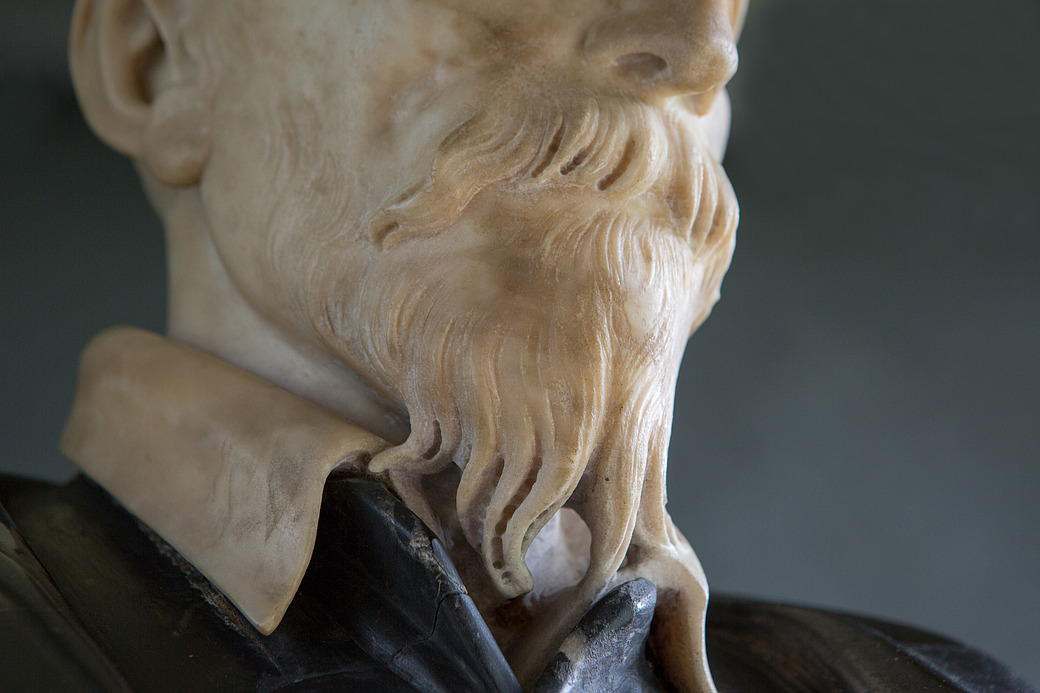
In Search of a History
Tracing Farinacci as a historical figure was relatively straightforward, but uncovering the provenance of the bust was much more difficult. Despite Irving and Marilyn’s best efforts, not a whisper of the bust could be found that gave its location in the seventeenth- or eighteenth-centuries. But thanks to meticulous internet searches conducted by Irving’s Book Project Assistant, Uta Nitschke-Joseph, a photograph was unearthed which showed the Farinacci bust on display in a sculpture gallery at the Art Museum of Detroit. This image was the key to unlocking the bust’s history.
The bust had been donated to the Museum in 1902 by Sibyle L. Baldwin, the widow of the former Governor of the State of Michigan, Henry P. Baldwin. The bust was part of a larger bequest of statues that were given on the condition that a new room was constructed for their display, to be named after the Baldwin family.
In 1924, Baldwin’s daughter, Katherine Phelps Bliss, visited the Detroit Museum to inspect their display. To her horror, she found that her mother’s bequest had been placed in storage and was in poor condition. Furious, she demanded that the sculptures be transported to her Manhattan apartment. The bill of lading—a document that details the items shipped—is extant, which mentions the bust of Farinacci.
Uncovering this part of the bust’s history led Irving and Marilyn to further documents that tracked its journey to the U.S. It had travelled from Italy in a group of objects purchased by a young man named Lewis Cass Jr., who served as ambassador to the Holy See in 1849. Irving searched the Palazzo Braschi, where customs records are kept, and found two pieces of parchment that granted permission for Cass to bring thirteen statues back from Italy, including that of Farinacci. Cass gave his sculptures to his father, Lewis Cass Sr., the then governor of Michigan, and they were displayed in the governor’s house. It is thought that the next governor, the aforementioned Henry P. Baldwin, took on the collection when he inherited the house from Cass in 1868.
Jumping forward in time to 1929, the bust changed hands again when the fortunes of Katherine Phelps Bliss suffered owing to the Wall Street Crash. She was forced to downsize her Manhattan apartment and sell the sculpture. It then came into the hands of Bertram Isard, a private collector based in Philadelphia; after his death, Isard’s wife offered it for sale at Sotheby’s in 1982. This was when Irving came across it.
In the bust of Farinacci, Irving noted youthful hints of the style of composing portrait sculptures that Bernini would go on to produce for the rest of his life. That Bernini was the author of the work also became probable through the sheer quality of the carving. Irving and Marilyn’s 2018 publication on the subject highlights the “bold drill work executed with great bravura,” in particular that of the perforated locks of the beard, which extend as much as an inch and a half below Farinacci’s chin.
Part of the Family
The Farinacci bust was not only a segment of Irving’s career: it was almost part of the family. His daughter, Amelia, reflected on Farinacci’s presence in their living room: “I’ve had a lot of conversations with him over the years. It was like having a grandfather or a spooky presence in the corner!” She described walking downstairs in the early hours of the morning and coming across the bust: “If you can’t sleep and you open the curtains, the moon can be very bright. And with those sunken cheeks, depending on the light, he was either friendly or very ominous!”
During their search for the bust’s history, having Farinacci watching over them each day as they conducted their research was not a source of frustration to Irving and Marilyn. Instead, they found it helpful. Marilyn describes frequently coming to look at him: “I’d say, ‘Oh my goodness, I don’t remember that exact detail—here’s what I’m looking for’ and so on. As art historians, we are so used to shuffling through books, looking for a good photograph to inspect. Having the bust right there was really out of the ordinary.”
When trying to resolve what she would do with the bust after Irving’s passing, Marilyn decided not to sell it. Instead, she resolved to “put it where it’s supposed to be. The people on the Grand Tour were interested in taking things away and putting them in American museums. But nobody has given anything back.”
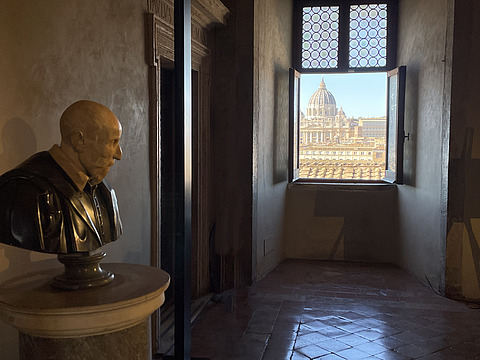
To realize her goal, she connected with an organization called LoveItaly, and with the American Friends of LoveItaly, which is dedicated to sustaining Italy’s cultural heritage by facilitating select restoration projects of artworks and architecture. Tracy Roberts, the non-profit organization’s Vice President said that they had never received a gift like the Farinacci bust. As a result, Marilyn and Tracy tirelessly worked to secure the sculpture’s return to Rome.
In October 2022, the bust was professionally packed at Marilyn’s home and eventually shipped to the Castel Sant’Angelo in Rome, where it is now displayed in a Renaissance-era room with mural paintings on the ceilings and walls. This position also returns Farinacci to the locale where his legal offices were once held. Laughing, Marilyn refers to this position as a “stroke of genius!” The bust was officially received in a ceremony in the Castel Sant’Angelo on March 20, 2023.
Ships in the Night
After organizing this new placement for the Farinacci bust with LoveItaly, Marilyn realized that it had already been sitting for years adjacent to the Castel Sant’Angelo, in the form of a painting by artist John Wenger, displayed in her living room. The painting shows, in modernist form, a classic view of the River Tiber, with the Castel on the right side of the composition.
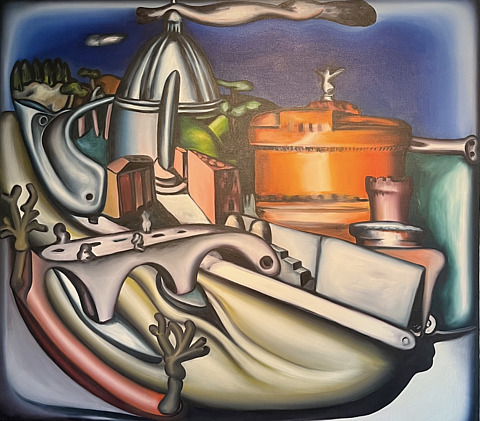
This was not the only coincidence linking Irving, Marilyn, and Farinacci. When the couple were graduate students, working on Irving’s Ph.D., they lived two doors down from the entrance to San Silvestro al Quirinale where Farinacci was buried. With a smile, Marilyn remembered, “It had a bell tower that was always waking us up and we would shake our fists!”
With the publication “Bernini’s Bust of Prospero Farinacci,” Irving’s career had come full circle—from the first Bernini discovery to the last. During his tenure at the Institute, Irving’s work on Bernini continued. His monumental study ‘Bernini and the Unity of the Visual Arts,’ published in 1980, was the first to tackle exhaustively the artist’s oeuvre. It remains the starting point for many scholars working on Bernini to this day.
Not limiting himself to investigations of Bernini, Irving also published extensively on everything from late antique architecture to twentieth century art during his time at the Institute, to great critical acclaim. After an illustrious career spanning over five decades, in which he played an integral part of life in the School of Historical Studies, he passed away aged 91 in 2019.
The legacy of Irving Lavin and Marilyn Aronberg Lavin lives on at IAS in the form of a fund that allays publication costs for Members working in art history. At the age of 97, Marilyn continues her academic work, preparing a number of Irving’s unfinished manuscripts for publication alongside publishing her own scholarship. The pair’s long history of collaboration is still going strong.
